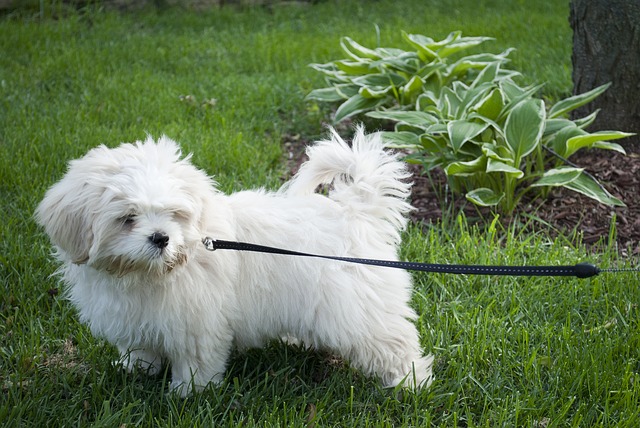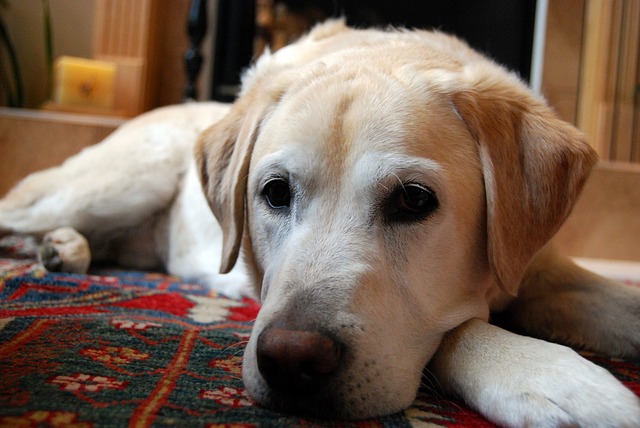Pee puddles in the kitchen, mysterious smelling stains in the hallway, “packages” soiling your favorite living room rug— a dog that hasn’t yet grasped the concept of house training is an unpleasant situation. It’s normal to see gradual improvements in a dog’s bathroom habits within a few weeks of training, but for some dogs, the path isn’t that easy.
Reverse potty training is something that can happen to puppies, newly adopted rescues, and even resident dogs that have lived in a home for years. It’s frustrating, worrying, and, most of all, messy.
Some dogs end up at the shelter because their humans can’t figure out the trick to teaching them to potty outside. It’s an issue that shouldn’t be taken lightly, but it’s not worth losing a dog over. Reverse potty training is a real thing, and there are practical ways you can get your dog off their self-destructive path and back on track with their training.

What Exactly Does Reverse Potty Trained Mean?
A dog that is reverse potty trained only goes to the bathroom when they’re inside. They could be outside for hours, and as soon as their four paws hit the hardwood, they feel it’s finally time to relieve themselves. Some dogs do it in plain sight of their family, and others wait around until they’re alone to lift a leg in privacy.
Related: The 15 Simplest Dog Breeds to Potty Train
Whether it’s a new behavior or something your rescue has been dealing with since the day your brought them home, reverse house training is always a problem. It’s different than a dog having a few accidents inside or urinating at inopportune times. It’s a complete reversal of what you want, and for one reason or another, your dog is confused about what’s expected of him.
Dogs that are reverse house trained will often show the following behaviors:
- Refuses to potty outside no matter how long you’re out
- Asks to come inside for the express purpose of relieving themselves indoors
- Only goes to the bathroom when you’re not looking and does it in places they think you won’t notice
- Looks guilty if you catch them going to the bathroom inside
Related: Our Top 11 Picks For The Best Indoor Dog Potty
Why It Happens
Now that you’ve determined your dog is reverse potty trained, your first thought is, “How do I fix it?!” We’ll get to that, but before you can solve the problem, you need to know what caused it. Dogs don’t suddenly forget their training for no reason, and if a dog is adamantly refusing to potty outside, there’s an explanation.
Inattentive Training: Sometimes you get lucky and adopt a dog that’s a house training whizz. They pick it up with little effort on your part, and all is well. If you’ve had one of these smarty pants dogs in the past, it’s easy to assume every pup you bring home will be the same. The assumption that house training is an easy process is your first mistake. If you’re not consistent with taking your dog out at the same times, leading them to the same place, and rewarding them when they do a good job, they’ll be confused. That confusion is what’s going to ruin your flooring.
Related: 10 Tips For Potty Training A Puppy From A Professional Dog Trainer

Punishment-Based Training: The old fashioned way of teaching a dog not to potty inside involves a rolled up newspaper and carpet burn from rubbing the dog’s nose in their mess. We’ve come a long way since those days, and we now know punishment is not the right way to teach a dog house training. All it does is teach them not to get caught. The next time, they’ll try to find a sneakier spot to squat—a place where they hope you won’t discover the evidence of their dirty deed. They don’t know they’re supposed to be doing their business outside, and punishing them for going inside doesn’t teach them that lesson.
Walking Potty Breaks: Taking your pup on regular walks is a way to give them opportunities to practice good house training habits, but it can backfire if you make one simple mistake. There’s a good chance going on a walk is one of your dog’s favorite activities, and it has nothing to do with going to the bathroom. They want to make their time out exploring the world last as long as possible. If you turn back toward home as soon as they’ve done the deed, they’ll catch on quick. DogSmith Dog Training and Pet Care says,
“Do not take your dog for a walk and then once they have pooped or urinated take them straight home. To a dog, this is punishment and they will relate their bathroom habit to ending of the walk. Thus they will hold their bathroom behavior for as long as possible to prevent their walk from ending. “
Fear of the Outside: Some dogs love the outdoors, and others cling to the safety of four walls and a roof over their head. Strange smells, loud noises, other dogs, other people–it’s overwhelming for a nervous pup. If they’re constantly on the lookout for the next big threat, they’re not relaxed enough to go to the bathroom. Stopping to go to the bathroom makes them vulnerable, and to them, it’s a risk not worth taking. They can only go when they’re sure they’re safe.
Surface Preference: Dogs that were once trained or forced to eliminate on a specific type of surface can find it difficult to let go of that lesson. Dogs left in cages with newspaper or blankets under their feet tend to do this, and dogs left tethered on concrete surfaces can too. When they move on to new lives, they seek out the familiar. Your carpet feels like the blanket they used to pee on, and tile floor can be hard and cool like concrete. They’re sticking with what they know.
Stress: Dogs feel stress in the same way humans do, and coping with their emotions can result in behavioral side effects. Moving to a new house, a new baby in the household, the loss of a family member, a new furry sibling—any kind of change in their life has the potential to throw off their house training. This is the reason many rescue dogs go to their new homes with reverse house training troubles. From their old life, to life in the shelter, and finally living with a new family, all that stress serves as a emotional blockade keeping them from learning proper house training.

How to Fix the Problem
Address the Root Cause: The first step in solving your pet’s pottying woes is to identify the problem and make practical steps to resolve the issue. If you determine your dog’s issues stem from lazy training on your part, your solution is somewhat simple–make a renewed effort to be consistent and reliable. Switching your training tactic from negative to positive reinforcement will solve the punishment problem, and extending your walk past the point of potty will take away the perceived punishment of shortened adventure time. Finding a way to eliminate, or at least reduce, your dog’s fear and stress will also play a role in their bathroom habits.
Designate a Potty Spot: Instead of letting the entire outdoors be your dog’s toilet, choose a specific area to be their potty spot. It can be a corner of the yard or the fire hydrant out front, but picking a specific spot will teach your dog there’s a method to the house training madness. Take your dog to their spot at the same time every day when you know they have to go to the bathroom (like when they wake up in the morning and after dinner). It’s also a good idea to make a pit stop at the spot before heading out on a walk. Teach them if they go to the bathroom, they can go for a walk. It’s a much better deal than their old understanding that if they go to the bathroom, they have to end their walk.

Pick Powerful Reinforcements: When your dog is reverse potty trained, you need to take positive reinforcement to the next level. Hold nothing back when deciding what kind of potty reward you’re going to give your dog. Whatever you choose should be something they only get during potty breaks and something so valuable they choose it over everything else. Hot dogs, a spoonful of peanut butter, it needs to be something your dog goes crazy for. When it’s time to potty, stand in their designated area for as long as it takes. This will be the hard part, but it’s important to not give in. Don’t give them the treat until they’ve gone to the bathroom. And when the magic moment finally happens, add in heaps of praise for good measure.
Be Their Shadow: If you’re serious about saving your carpet, you need to learn to be your dog’s shadow and watch them constantly. The more time you spend with your dog, the easier this will be. You’ll eventually learn to recognize the signs that an accident is about to happen. Your dog might start sniffing around suspiciously or walk in circles. It’s the canine version of a toddler’s potty dance, and it’s your job to know it’s happening. As soon as your dog starts to lift their leg or squat down, you need to be there. Interrupt their behavior and immediately lead them to their designated spot.
Related: 7 Best Hands-Free Dog Leashes
It will be tiresome watching your dog’s every move, but it’s the only effective way to reverse their reverse potty training. If keeping a constant eye on your dog simply isn’t an option, Web MD suggests,
“If you can’t watch your dog, you must confine her to a crate, put her in a small room with the door or a baby gate closed, or tie her to you with a leash that’s approximately six feet long. If all goes well, gradually increase the amount of time your dog spends out of her confinement area.”
If raising a dog was easy, housetraining would take only a few days and end with only minor clean up. But when you signed up for a new furry friend, you agreed to do whatever it takes to help them adjust to life in your home. It will take weeks, and it will be frustrating. It will require your full commitment, and training a reverse house trained dog definitely won’t be easy. That’s the bad news, but the good news is it can be done. The first time your dog goes to the bathroom in their designated spot will be a monumental occasion. Remember your love for your dog is unconditional, and you’ll do what it takes to get over this house training hurdle.
 Toledo, United States.
Toledo, United States.